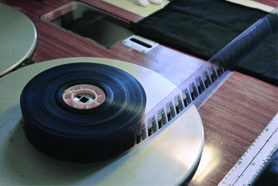7 Common Mistakes To Avoid While Digitizing Your Content
Home » 7 Common Mistakes To Avoid While Digitizing Your Content
- February 28, 2017

Attributing to the loss of valuable content and the burgeoning demand for good content by today’s digital consumer, media organizations and content owners have been investing in digitization and archiving of content. Digitization of legacy content is not just about converting analog into digital, but a comprehensive digitization involves series of processes and strict quality control.
Let us look at some common mistakes made during digitization of audiovisual content.
1. Incomplete Metadata
Proper storage is essential for the preservation of materials, but it is also necessary to catalog content by adding metadata. Metadata describe and categorize digital content to provide better search, sharing and distribution of media assets.
Most libraries that manage digital content depend on the metadata in databases, integrated library systems, and media asset management systems or their extensions, which also support patron discovery and retrieval of content. However, incomplete or missing metadata often causes issues with searchability of content. Though modern MAM systems generate automated metadata, archivists and operators must feed in as much granular information as possible. Remember, more the information fed in, higher is the accuracy of a system.
2. Ignoring Cataloging before Digitization
While creating relevant metadata is essential to ensure easy retrieval of content, generating and maintaining unique barcodes for every tape is a major step for digitization. Not only does barcode ensures rapid availability of data, but the quick turnaround time also ensures minimal loss of time on entry or retrieval of data.
Tapes can be identified easily if they are barcoded properly and the information related to each barcode is captured in a centralized system.
3. Not Reviewing the Content before Digitization
Not doing baseband quality check or not reviewing the material before digitization is another common mistake that archivists make while digitizing the content. Each piece of content that gets archived need to be examined for multiple versions and completeness to ensure that repetitive and unusable content is not digitized. It is a possibility that a tape contains unedited, duplicate or damaged versions of content that was not to be digitized.
4. Not Maintaining a Uniform File Format and Size
Before beginning the archiving process, one must follow a set of guidelines to ensure all the archived content adhere to a pre-decided, uniform file format and size of file. Inability to do so can result in additional cost and time as broadcasters will have to use different transcoding systems for optimizing content for various distribution network like OTT, DTH, etc. Further, inconsistent file sizes and duration also affect the speed of digitization and make it difficult for archivists to ascertain the storage requirements for a deep archive.
5. Poor Maintenance of Equipment
Often, curators and broadcasters do not maintain old tapes, films and equipment regularly. Old equipment needs to be protected against dust, extreme temperatures, and regular wear and tear. As some of the equipment (players, scanners etc.) are out of production, a breakdown of equipment might cause project delays.
Moreover, a lot of legacy content is still available on a variety of tapes and films. If not maintained and restored correctly, the curators run the risk of losing this valuable content. Therefore, archivists need to ensure proper maintenance of legacy content and equipment to enable smooth archiving.
6. Ignoring Safety and Security Threats
Digitization of content has also led to the rise of security threats – both physical and cyber. Physical threats like dust, heat, moisture, natural calamities, and theft can destroy content and its carriers. The archiving facility at times houses some of the rarest and high value content, infrastructure should be therefore be designed keeping in mind threat from these external factors.
Content is also at risk due to cyber threats, which can corrupt files beyond repair. Archiving facility should have a well-secured network infrastructure like firewall protection, anti-virus, and malware protection in place to address this issue.
7. Not Scheduling Deep Archive
With new content generated and legacy content refurbished for use, a lot of content need to be regularly archived. One of the common mistakes that media organizations commit is not scheduling deep archival of old content at regular intervals. While it apparently does not seem to impact the archival process, old content consumes a lot of space and bandwidth, thereby affecting the performance of the system.
Moreover, if deep archive of content is not scheduled at regular intervals, a lot of content gets piled up in the production storage, affecting the speed and searchability. Archivists need to schedule auto archiving of content at regular intervals to ensure old content does not get lost in the maze of content.
So the next time you plan to archive or digitize content, try avoiding these common mistakes to save cost, time, and resources.

